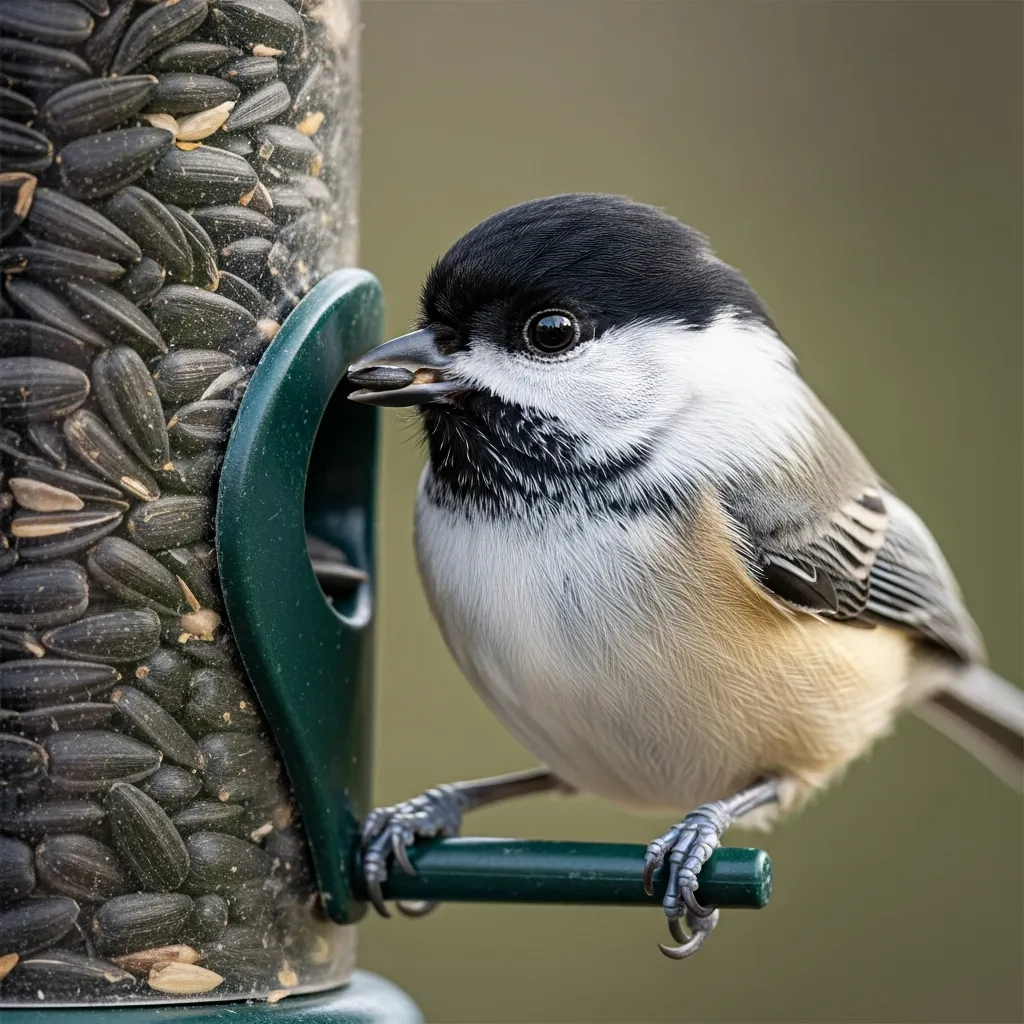
Creating a Bird-Friendly Backyard: The Ethics of Attraction
Observing birds is wonderful, but you can take your experience a step further by making your own backyard a more inviting habitat. Attracting birds comes with a significant responsibility to ensure their health and safety. The goal is to supplement their natural diet and offer resources, not to make them dependent or inadvertently cause them harm.
Choosing the Right Feeder
Different feeder styles attract different types of birds. Understanding which feeders work best for certain species can help you attract the birds you want to see. This is key to finding the best bird feeders for small birds and other desired visitors.
Tube Feeders: These are hollow cylinders with small perches and feeding ports. They are excellent for small birds like finches, chickadees, and titmice, as they protect the seed from weather and can deter larger birds like jays or grackles.
Hopper Feeders: These look like small houses with a central reservoir that dispenses seed onto a tray. They can hold a lot of seed and are attractive to a wide variety of birds, including cardinals, grosbeaks, and jays.
Suet Feeders: These are typically small wire cages designed to hold cakes of suet (rendered animal fat). Suet is a high-energy food, essential for insect-eating birds like woodpeckers, nuthatches, and wrens, especially during cold winter months.
Platform Feeders: A simple open tray, either on the ground or mounted on a pole. They attract the greatest variety of birds, including ground-feeders like doves and sparrows. However, the seed is exposed to the elements and can spoil quickly. They also require the most diligent cleaning.
Feeder Hygiene: A Non-Negotiable Responsibility
This is the most critical aspect of backyard bird feeding. Dirty feeders can become breeding grounds for bacteria and mold, leading to the spread of deadly avian diseases like salmonellosis, avian pox, and house finch eye disease. A crowded, unclean feeder can do much more harm than good.
You must clean your feeders regularly, about once every one to two weeks, or more often in wet weather. To clean a feeder properly:
1. Take the feeder apart and discard any old seed.
2. Scrub all parts with a brush using a dilute bleach solution (one part bleach to nine parts water) or a vinegar solution.
3. Rinse all parts thoroughly with clean water to remove any residue.
4. Let the feeder dry completely before refilling it. This is a crucial step, as moisture encourages mold growth.
If you see any sick birds at your feeder, take it down immediately and clean it thoroughly. It’s often best to leave it down for a week or two to encourage the flock to disperse and prevent further spread of disease.
Beyond the Feeder: Water and Native Plants
Food is only one part of a good habitat. A reliable water source can attract even more birds than a feeder, including species that don’t eat seed. A simple, shallow birdbath is perfect. The water should be no more than 2-3 inches (5-7 cm) deep. Like feeders, birdbaths must be cleaned regularly to prevent the spread of disease and mosquito growth. A quick scrub and fresh water every couple of days is ideal.
The single best way to support local bird populations is by planting native plants. Native trees, shrubs, and flowers provide the insects, seeds, nectar, and berries that birds have evolved to eat. They also offer crucial shelter and nesting sites. Creating a landscape with native plants provides a self-sustaining habitat that benefits not only birds but all local US wildlife.















